2017-07-30 By Robbin Laird and Ed Timperlake
The new Dunkirk movie is one of the best war movies in years.
It does what film does best; put one into the shoes of the persons involved rather than providing a platform for lecturing the audience on the moral values of the director.
With Dunkirk, one gets the experience of being a British soldier, sailor and air man in the midst of one of the greatest military defeats of all time.
And one gets a sense that without the British public showing up in small boats there would have not been much left of the British Army after the Dunkirk debacle.
The French press has seen a great deal of criticism of the movie for not highlighting the key role, which the French played (along with the British infantry one might note) in providing the corridor through which the Dunkirk escape could occur.
http://theconversation.com/what-happened-to-the-french-army-after-dunkirk-80854
This story is a key one and perhaps another film can tell the story; yet the British can certainly be excused for pulling their troops out first although several thousand French troops made it to Britain.
https://www.quora.com/Did-the-British-abandon-France-by-withdrawing-in-Dunkirk
Yet is should also be noted that a substantial number of the French troops which escaped to Britain then returned back to France to live under Vichy France which certainly highlights the point of why you prioritize your own people who have no place to go but home and to defend it from the Germans.
But the way to remember Dunkirk is to ensure that we do not need to repeat it.
As the illiberal states prepare for higher intensity operations, our slow pace in being able to shift from engaging in Slo Mo war to preparing for higher intensity operations can put us exactly in this position.
We looked at this challenge in a piece published earlier on Second Line of Defense.
2016-02-14 By Robbin Laird and Ed Timperlake
The F-35 working with robotic elements and with new weapons can empower a distributed operations approach.
This approach is being tested out at various centers of innovation within the U.S. military and will be synergistic with allied partners.
Traditional assets, such as the large deck amphibious ship or th large-deck carrier, will be rethought as the new approach and new capabilities are introduced into the force.
Continuing to invest in past approaches and capabilities makes little sense.
And ultimately, the fifth-generation aircraft and associated systems can drive significant cultural change.
But there is nothing inevitable here.
The United States is at a crucial turning point.
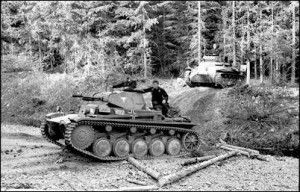
In a stringent budgetary environment and with a demand to shape a post-Afghan military, the crucial requirement is to invest in the future not the past.
But it is not just about airframes or stuffing as much as you can in legacy aircraft.
The new aircraft represent a sea change with significant savings in terms of fleet costs and overall capability at the same time.
The sustainability of the new aircraft is in a world significantly different from legacy aircraft.
Digital maintenance is part of the revolution in sustainability. The sustainability revolution enables a significant increase in the sortie generation rates for the new combat aircraft.
And in addition to this core capability, there is a significant transition in combat approaches facilitated by the new aircraft.
The aircraft can shape disruptive change by enabling distributed operations.
The shift is from linear to simultaneous operations; it is a shift from fighters needing reachback to large aircraft command and control and ISR platforms to 360-degree dominance by deployed decision makers operating not in a network but a honeycomb.
These lessons have been recently highlighted in the Trilateral Exercise held at Langley AFB in December 2015.
If this exercise was held 12 years ago, not only would the planes have been different but so would the AWACS role. The AWACS would have worked with the fighters to sort out combat space and lanes of operation in a hub spoke manner.
With the F-22 and the coming F-35, horizontal communication among the air combat force is facilitated so that the planes at the point of attack can provide a much more dynamic targeting capability against the adversary with push back to AWACS as important as directed air operations from the AWACS.
As General Hawk Carlisle put it:
“The exercise was not about shaping a lowest common denominator coalition force but one able to fight more effectively at the higher end as a dominant air combat force.
The pilots learning to work together to execute evolving capabilities are crucial to mission success in contested air space.”
Modernization of assets, enhanced capabilities to work together and shaping innovative concepts of operations were seen as key tools for the U.S. and the allies to operate in the expanded battlespace in order to prevail…..
And as the RAF highlighted:
“Whoever can gather, process and exploit the most information in the quickest time will win the information war and ultimately the fight.
With fifth generation aircraft being able to instantly share data with their fourth generation cousins, the Typhoon can become and an even more effective and capable jet fighter.”
Fifth-generation aircraft both generate disruptive change and live off of disruptive change.
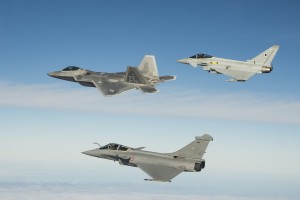
Taking a fleet approach, rather than simply focusing on the platforms themselves, highlights their potential for disruptive change.
Properly connected or interoperable with one another, the new aircraft can work together to operate like a marauding motorcycle gang in an adversary’s battlespace.
Rather than operating as a linear force, the marauding motorcycle gang creates chaos within the OODA loop of the adversary. In fact, the F-35 is really about shifting from the OODA loop with the machine-man interface doing much of the OO and focusing attention on the DA.
By having an onboard combat systems enterprise able to respond in real time to the impacts that the aircraft are creating in the battlespace, they can respond to the fractual consequences of the battle itself.
Rather than going in with a preset battle plan, the new aircraft can work together to disrupt, destroy, and defeat adversary forces within the battlespace. It is about on-the-fly (literally) combat system processing power that enables the pilots to act like members of a marauding motorcycle gang.
The fifth-generation aircraft enable the pilots to become key decision makers within the battlespace and, if properly interconnected, shape a distributed operations approach to battle management and execution.
They are key elements of C4ISR D, which is deployed decision making rather than data collection sent back to decision makers for less timely actions. C5ISR D is the core capability that 21st-century military forces need for strategic advantage.
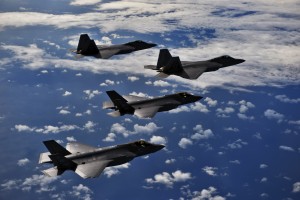
For the United States to have an effective military role in the new setting of regional networking, a key requirement will be effective and assured combined command, control, and communications, linked by advanced computing capabilities to global, regional, and local intelligence, reconnaissance, and surveillance assets (C5ISR).
The services will need to ensure that there is broad synergy among U.S. global forces fully exploiting new military technologies and the more modest capabilities of regional allies and partners.
Indeed, C5ISR is evolving to become C5ISR D, whereby the purpose of C5ISR is to shape effective combined and joint decision-making. The USMC clearly understands and embraces the disruptive capabilities of the fifth-generation aircraft. For the USMC, TAC Air does not simply play a close air support role in any traditional sense.
It is an enabler for distributed operations when such operations are essential to either conventional strike or counterinsurgency warfare.
USMC aviation has allowed the USMC ground forces to operate with greater confidence in deploying within the civilian population in Iraq. Aviation’s roles in both non-kinetic and kinetic operations have allowed the USMC to avoid operating within “green zones” so as to facilitate greater civilian-military relations.
Aviation has also provided an integrated asset working with the ground forces in joint counter-IED operations. And quite obviously, battlefields of the future will require the USMC to operate upon many axes of attack simultaneously. Such an operation is simply impossible without a USMC aviation element.
For the USMC thinks ground in the air and the forces on the ground can rely 24/ 7 on USMC aviation forces to be with them in the ground fight.
As Lt. Col. “Chip” Berke, the F-22, F-35, F-16 and F-18 Marine Corps former squadron commander, put it in a presentation on airpower at the Copenhagen Airpower conference last year:
As a JTAC the key requirement is that the airplane show up.
The A-10 pilots are amazing; the plane will not always able to show up in the environment in which we operate; the F-35 will.
That is the difference for a Marine on the ground.
The F-35 will be a “first-generation flying combat system” that will enable air-ground communication and ISR exchanges unprecedented in military history. The pilot will be a full member of the ground team; the ground commanders will have ears and eyes able to operate in a wide swath of three-dimensional space.
But if other airpower leaders simply mimic the operations of older aircraft with the fifth-generation aircraft, the promise of the new air operations will not be realized.
As Robert Evans, a specialist on C2, formerly a senior USAF officer and now with Northrop Grumman put it about the dynamics of change:
If warfighters were to apply the same C2 approach used for traditional airpower to the F-35 they would really be missing the point of what the F-35 fleet can bring to the future fight.
In the future, they might task the F-35 fleet to operate in the battlespace and affect targets that they believe are important to support the commander’s strategy, but while those advanced fighters are out there, they can collaborate with other forces in the battlespace to support broader objectives.
The F-35 pilot could be given much broader authorities and wields much greater capabilities, so the tasks could be less specific and more broadly defined by mission type orders, based on the commander’s intent. He will have the ability to influence the battlespace not just within his specific package, but working with others in the battlespace against broader objectives.
Collaboration is greatly enhanced, and mutual support is driven to entirely new heights.
The F-35 pilot in the future becomes in some ways, an air battle manager who is really participating in a much more advanced offense, if you will, than did the aircrews of the legacy generation.
And going back to my comment about the convergence of planning and execution, and a warfighter’s ability to see and sense in the battlespace … that’s only relevant if you take advantage of it, and the F-35 certainly allows warfighters to take advantage of it.
You don’t want to have a fifth-generation Air Force, shackled by a third-generation system of command and control.
The result would be that the United states and its allies will repeat the failures of the French facing the Germans in World War II where they had superior tanks with outmoded tactics and command structures, and with the predictable results.
The new aircraft simply do not function in the way the old do.
Indeed, one lesson of Dunkirk needs to be remembered when shaping an innovative military strategy for the decade ahead 21st century: new capabilities without new concepts of operations will lead to strategic failure.
A military force is truly blessed if the combat leaders at all levels in the chain of command have the proper weapons and also the wisdom to employ them against a reactive enemy. History of combat often shows that their not understanding or exploiting that advantage can offset one army’s engagement-winning weapons.
It is true that weaker forces through brilliant leadership can vanquish the more technology-capable and stronger army. Of course, as Napoleon said, he also wanted a general who was lucky, and all combat leaders know how the great unknown of luck can also determine the outcome.
And to add to the mix is another great thinker, Damon Runyon, who once quipped, “The race is not always to the swift nor the battle to the strong, but that’s the way to bet.”
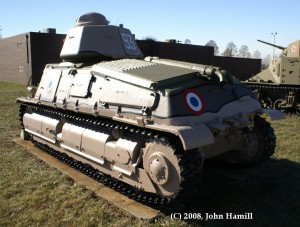
By all static order-of-battle accounting, the Miracle at Dunkirk should have never been necessary, because the British and French had a number of key elements that could have allowed them to win, including superior tanks to the attacking Germans and rough parity in the air.
But the French and British were defeated; the British Expeditionary Force was evacuated and lived to fight another day on to the eventual V-E Day. So betting on the French and the British was the wrong chip to play on the table of the battlefield.
The Germans Blitzkrieg generals down to the lower ranks were all “making their own luck” by exploiting the French and British approaches with the weapons they had.
The fall of France may have some interesting lessons on CONOPS and decision making against a reactive enemy.
And those lessons argue for shaping a transition from legacy air CONOPS to new distributed air operations CONOPS leveraging the F-22 and F-35.
The Germans were a quicker and smarter force that defeated the French and the British. Words echoing from history tell us that story and also can now bring an interesting lesson learned to the current debate on what is becoming known as “distributed air operations.”
The shift from “legacy” air operations to distributed air operations is a significant operational and cultural shift. Characterizing the shift from fourth- to fifth-generation aircraft really does not capture the nature of the shift. The legacy aircraft operate in a strike formation, which is linear and runs from Wild Weasels back to the AWACS.
The F-22 and F-35 are part of distributed operational systems in which the decision makers are distributed and a honeycomb structure is created around which ISR, C2, strike, and decision-making can be distributed.
A new style of collaborative operations is shaped but takes away the ability of an adversary to simply eliminate assets like the AWACs and blind the fleet. Distributed operations is the cultural shift associated with the fifth-generation aircraft and investments in new weapons, remotely piloted aircraft, and the crafting of simultaneous rather than sequential operations.
Unfortunately, the debate about fifth-generation aircraft continues as if these are simply aircraft, not nodes driving significant cultural changes in operational capabilities.
In a fascinating book by Hugh Sebag-Montefiore on the courageous men in the British army who fought the Germans to allow the escape from Dunkirk, some of these lessons were highlighted. [ref] Hugh Sebag-Montefiore, Dunkirk: Fight to the Last Man (Cambridge, MA: Harvard University Press, 2008).[/ref]
In writing the book, the author provided significant insight into how the British and French lost to the Germans in the European forests and battlefields.
Comments taken from diaries of the survivors provide significant insight into lessons learned by not engaging in the cultural revolution that one’s new technology provides.
The British and French had new equipment, which, if properly used and embedded into appropriate concepts of operations, might well have led to a different outcome at the beginning of the war.
And the first lesson here is simply to develop advanced equipment is not even half the job.
First and foremost: “The campaign showed that politicians must never, even in peacetime, deprive their armed forces of the equipment they need. Complacently assuming that the equipment can be manufactured once war is declared is demonstrably unwise.” [ref]Ibid. xiv[/ref]
A second lesson learned is that if you do not adapt your command structure to the technology, you will lose.
A theme that the author developed was that although the French had tanks, World War I generals who simply were not able to adapt to the tactics of armored warfare commanded them.
These difficulties were aggravated a hundred times by the style of French leadership.
The soldier who should have had most influence on the way in which the first counterattack was mounted was X Corps’ commander General Grandsard, who had direct control over the divisions in the Sedan sector.
He was a Corps’ commander General Grandsard, who had direct control over the divisions in the Sedan sector.
He was a general of the old school, who had not understood that French strategy must change in line with Guderian’s (the German general in charge of the attack) new mobile tactics. [ref]Ibid, 100.[/ref]
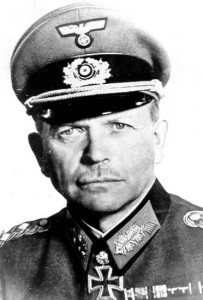
The author when discussing command style introduced a really key term very relevant to the shift from sequential to simultaneous air operations:
“The need to refer back to Guderian was, however, limited by the entrepreneurial culture he fostered:
German officers were expected to make up their own minds on how to achieve the objectives Guderian set and how to act in a crisis.” [ref]Ibid, 101.[/ref]
A third lesson was the importance of getting inside the enemy’s OODA loop.
The French command structure was too slow to use information and to act on that information on a timely manner.
The German commanders were allowed significantly greater freedom of action and could act in minutes, whereas the French operated in terms of hours:
“The rapid German response to the threat posed by the counter-attack only serves to underline the slowness of the French . . .
In other words, the Germans began their own counter-attack within 10 minutes of identifying their target, whereas it had taken the French more than 12 hours to launch their troops into the attack.” [ref]Ibid. 105.[/ref]
A clear advantage of the new aircraft is their technical capability to get inside the enemy’s OODA loop; but without change in how command structure works, no clear advantage can be realized.
A fourth lesson is the challenge of the enemy exploiting your weaknesses for which he has trained to exploit.
The German tankers confronting superior armor in the advanced French tanks were able to exploit weakness in those tanks because of intelligence about the weaknesses and training to exploit those weaknesses.
From the diary of a German survivor with regard to meeting the superior French tanks:
The tanks’ silhouettes were getting larger, and I was scared. Never before had I seen such huge tanks. . . .
My company commander gave clear instructions over the radio describing which targets to aim at, and the enemy tanks were just 200 meters away before he gave the order to fire.
As if they had been hit be lightening, three of the enemy tanks halted, their hatches opened and their crews jump out. But some of the other tanks continued towards us, while some turned. . . .
Presenting their broadsides to us. On the . . . side of the tank there was an oil radiator behind some armor.
At this spot, even our (smaller Panzer 2) tanks’ 20mm guns could penetrate the amour, and the French tanks went up in flames immediately after they were hit there. It was then that our good training made such a difference. [ref]Ibid. 101-102[/ref]
The Chinese study of the classic U.S. air battle and the perceived value of targeting USAF or USN large battle management systems such as AWACS reminds one of the need to get rid of the AWACS as a lead element in any offensive operations and sequential air battle and to move to distributed capabilities in simultaneous operations.
A fifth lesson is to develop logistical systems that allow one to exploit advantages of new technology.
The superior French tanks were refueled by trucks and dependent upon truck-provided fuel.
The Germans parked a “farm” of fuel containers to which the tanks came for refueling and could thus keep up the speed of the attack:
They (the key French tanks) could not even be expected in their first assembly area at Le Chesne, fifteen miles southwest of Sedan, until 6 am. It would then take around six hours to fill them with petrol, another two to move the five miles to their positions to the Mont Dieu forest, and two more hours to refuel them again. . . .
In contrast, the Germans overcame their refueling difficulties by transporting petrol to the front in cans. Once the cans were in the vicinity of the panzer divisions, all the tanks nearby could be refueled simultaneously on any terrain.
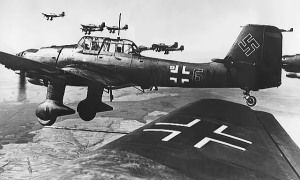
The French, on the other hand, had the petrol brought to the front in lorries, which, not being tracked, could not be used over rough ground. Even when the French armor was refueled on a road, the vehicles’ petrol tanks had to be filled up consecutively rather than simultaneously which took much longer than the German method. [ref]Ibid. 109-120[/ref]
Keeping the old tanker approach in place while you add the new aircraft undercuts the ability of those aircraft to operate in a distributed approach.
By moving the tanker line back significantly, one can refuel almost like the German “fuel farm” and not expect the tankers like the French trucks to come to them.
Even the difference between simultaneous versus sequential attacks was underscored as crucial to the success of the Germans and the negative impact on French morale.
As one French officer commented, “Simultaneous attacks would have been very difficult for us. But attacking in waves in this manner means they lose their courage after seeing their burning comrades.” [ref]Ibid.107[/ref]
In short, the core lesson to learn is to buy appropriate numbers of new equipment and to adapt the operational culture, including the logistics systems, to allow the blue team to exploit their advantages.
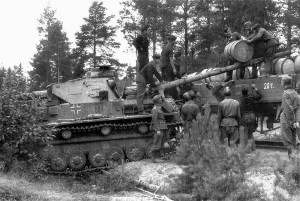
Unless one wants outcomes such as the French and British experienced in the forests of Europe against the Germans, it is crucial to accelerate the shift to a new culture and capability built around distributed operations.
The old system of sequential air operations built around legacy aircraft, AWACS, and multiple assets needs to be replaced in a timely manner by a well-resourced distributed operations enterprise.
The current Deputy Commandant of Aviation, Lt. General Davis, when CG of 2nd MAW underscored how important he saw the F-35 as a tool in the hands of what he called the I-Pad generation pilots of a USMC shaping a new C2 approach:
I think it is going to be a fantastic blending of not only perspectives but also attitudes.
And what I really look forward to is not the old guys like me, but the very young guys who will fly this fantastic new capability.
The older generation may have a harder time unleashing the power and potential of the new gear – the new capabilities. We might say “why don’t you do it this way” when that approach might be exactly the wrong thing to do from a capabilities standpoint.
My sense is the young guys will blend. We’ve already picked the first Prowler pilot to go be an F35 guy.
He’s going to do great and he’s going to add perspective and attitude to the tribe down at Eglin getting ready to fly the jet that’s going to make a big impact on the F35 community.
I think it’s going to be the new generation, the newbies that are in the training command right now that are getting ready to go fly the F35, who are going to unleash the capabilities of this jet.
They will say, “Hey, this is what the system will give me. Don’t cap me; don’t box me.
This is what this thing can do, this is how we can best employ the machine, its agility its sensors to support the guy on the ground, our MEU Commanders and our Combatant Commanders and this is what we should do with it to make it effective.

